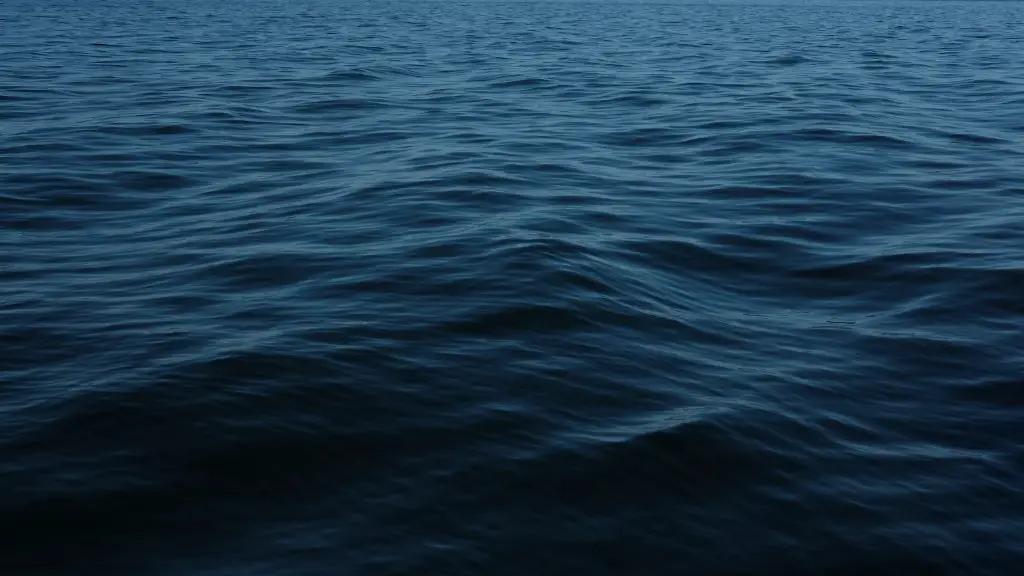Lake Michigan is a large freshwater lake in the Great Lakes region of the United States. It is the third-largest of the five Great Lakes, and is home to a variety of fish and other aquatic organisms.
Recently, however, Lake Michigan has been the site of an alarming number of fish kills. Scientists and conservationists are working to understand why so many fish are suddenly dying in this large body of water.
The causes of these fish kills can be many and varied, ranging from natural causes such as environmental or weather conditions to man-made ones such as overfishing or pollution.
One of the major suspects in the recent fish kills in Lake Michigan is the exotic fish species Round Goby. This invasive species has been found in abundance in the lake and is blamed by many scientists and experts as one culprit in the potential fish kill.
Round Goby have been linked to the decline of native species due to the competition they provide. The invasivefish outcompete the native species for food and habitat, and their voracious appetites and fast reproductive cycles allow them to quickly overtake native species.
In addition to the competition for resources, the Round Goby is also a carrier for a number of diseases that possibly affect native fish populations. As the Round Goby continues to spread and multiply in Lake Michigan, the risk of disease to native species may become even more pronounced.
Another likely culprit in the recent fish kills in Lake Michigan is water pollution. Water pollution can come from a variety of sources, including untreated sewage, factory and industrial run-off, and agricultural chemicals. All of these polluting substances can drastically reduce the oxygen levels in bodies of water, which can cause a number of complications, ranging from contributing to algal blooms to suppressing fish populations.
It is still unclear what exactly is causing the dead fish in Lake Michigan, but scientists and conservationists are working hard to find out so that the cause can be properly addressed and measures taken to solve the problem.
Over-Fishing as a Factor
One of the suspected causes of the high number of dead fish washing up on Lake Michigan’s shores is over-fishing.
Overfishing is the practice of taking too many fish from a body of water, thus reducing the population of a given species. This can lead to large-scale ecological disruption, as the fish population is no longer able to maintain the sustaining balance required for a healthy environment.
Lake Michigan is a popular destination inland in the Great Lakes region, and it has a large sport-fishing industry which could be contributing to the collapse of certain fish populations.
Furthermore, Lake Michigan has been hit by a number of record-breaking heat waves in recent years, which have caused the lake water to rapidly heat up. This further poses a risk to the fish populations, as a sudden increase in temperature can cause a sudden die-off if a species isn’t equipped to handle it.
Over-fishing and water temperature are just two of the potential causes for the alarming number of dead fish washing up on Lake Michigan’s shores. Conservations are still working to identify the exact cause so that the necessary measures can be taken to prevent further ecological damage.
The Impact of Pollutants on Fish
Another primary cause for the dramatic number of dead fish in Lake Michigan may be the presence of pollutants in the water.
Pollution can come from a number of sources, but it often comes from human activities such as factory runoff and agricultural chemicals. This form of runoff is especially prone to leaching into nearby bodies of water, where it can cause a great deal of ecological damage.
Pollutants can cause a number of issues, such as algal blooms, acid rain, and eutrophication. Each of these conditions can drastically reduce the quality of water and put strain on the native fish populations.
Pollutants can also cause a phenomenon known as ‘dead zones’ to form in bodies of water. These are areas of oxygen-depleted water caused by the buildup of nutrients. This can be incredibly dangerous for fish, as the lack of oxygen can quickly cause mass die-offs that leave entire populations decimated.
Pollutants are an incredibly serious threat to bodies of water, and scientists are still researching the connections between pollutants, fish populations, and the environment in general.
Habitat Loss and Unnatural Pressures
In addition to the causes of pollution, another suspected factor in the high number of dead fish in Lake Michigan is habitat loss and unnatural pressures.
When human development is built, it can encroach upon the natural habitats of fish populations. This can have drastic and lasting effects on a species, as their natural habitats are destroyed and they are unable to migrate or find new areas to sustain themselves.
Furthermore, in areas where fishing is prevalent, unnatural pressures can also be placed on fish populations. This is especially true in Lake Michigan, where recreational fishing is an incredibly popular activity. Unnatural pressures can include the overharvesting of fish or the disruption of natural feeding and spawning behaviors.
What is clear is that the recent increase in dead fish in Lake Michigan is cause for concern. Conservationists are working around the clock to identify the exact causes of the fish kills so that proper steps can be taken to protect the lake’s delicate ecology.
The Effects of Water Discharge
Another potential cause of the recent fish kills in Lake Michigan is water discharge from factories and other sources.
When factories and other businesses discharge their wastewater, they often release contaminated materials into nearby bodies of water. This can include heavy metals, bacteria, and other toxins which can have a dramatic and quickly noticeable effect on the ecology of a body of water.
Not only can these pollutants reduce oxygen levels in the water, but they can also cause algal blooms and other disruptions. In addition, factory wastewater can also introduce foreign species into a body of water, further complicating the environment.
Water discharge is an incredibly serious problem, and scientists are working to identify the exact sources of the contaminants so that they can be addressed in an effective manner.
A Growing Problem
The increasing number of dead fish in Lake Michigan is indicative of a larger etiological problem that is beginning to manifest itself in bodies of water around the world.
The sources of the recent fish kills are still unknown, but the underlying causes are becoming clear: pollution, habitat loss, and unnatural fishing pressures are all contributing to a global problem that is having drastic effects on local ecosystems.
However, research and conservation efforts are still underway, and scientists are working to find solutions to the looming ecological issues. Only through concerted effort and collaboration between scientists, governments, and citizens can the problems of pollution and other environmental stressors be addressed.
Scientific answers and Solutions
The scientific community is also looking for ways to understand and address the recent fish kills in Lake Michigan. Researchers are studying the effects of pollution, habitat loss, and other man-made factors that could be contributing to the problem.
These studies are often done in laboratories, where scientists are able to simulate and monitor the ecological effects of different pollutants and factors. By studying the effects of these factors in a controlled environment, scientists can gain valuable insights into the etiology of fish kills.
In addition to researching the causes of the fish deaths, scientists are also working on potential solutions. These can range from methods to improve water quality and curbing pollution to creating safe habitats for fish populations.
It is only through scientific research and collaboration between citizens and governments that the problem of dead fish in Lake Michigan and around the world can be properly and effectively addressed.
Restoring by Protection
The restoration of fish populations in Lake Michigan is of paramount importance to local citizens, governments, and conservationists.
The first step in restoring the lake is to increase awareness and education about the problem, as well as methods of prevention and protection. This can be done through the implementation of public outreach campaigns, the implementation of sustainable fishing practices, and the enforcement of environmental protection laws.
The second step is to take proactive steps to restore the lake’s ecological balance. This can include the reintroduction of native fish species into the lake, minimizing the risk of invasive species, and restoring habitats that have been damaged due to human activities.
Finally, increased efforts must be made to monitor and protect the lake. This can include regular testing and surveillance of the lake’s water quality, as well as keeping a close eye on populations of both native and invasive species.
By taking these steps, scientists and conservationists are hopeful that they can restore Lake Michigan’s fish populations and return the lake to a healthy and vibrant ecosystem.





